Heterogeneous enhancer states orchestrate β cell responses to metabolic stress
- PMID: 39472434
- PMCID: PMC11522703
- DOI: 10.1038/s41467-024-53717-0
Heterogeneous enhancer states orchestrate β cell responses to metabolic stress
Abstract
Obesity-induced β cell dysfunction contributes to the onset of type 2 diabetes. Nevertheless, elucidating epigenetic mechanisms underlying islet dysfunction at single cell level remains challenging. Here we profile single-nuclei RNA along with enhancer marks H3K4me1 or H3K27ac in islets from lean or obese mice. Our study identifies distinct gene signatures and enhancer states correlating with β cell dysfunction trajectory. Intriguingly, while many metabolic stress-induced genes exhibit concordant changes in both H3K4me1 and H3K27ac at their enhancers, expression changes of specific subsets are solely attributable to either H3K4me1 or H3K27ac dynamics. Remarkably, a subset of H3K4me1+H3K27ac- primed enhancers prevalent in lean β cells and occupied by FoxA2 are largely absent after metabolic stress. Lastly, cell-cell communication analysis identified the nerve growth factor (NGF) as protective paracrine signaling for β cells through repressing ER stress. In summary, our findings define the heterogeneous enhancer responses to metabolic challenges in individual β cells.
© 2024. The Author(s).
Conflict of interest statement
The authors declare no competing interests.
Figures

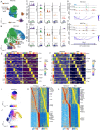
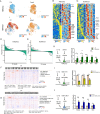
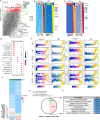
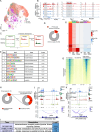
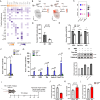
References
-
- Prentki, M., Peyot, M. L., Masiello, P. & Madiraju, S. R. M. Nutrient-induced metabolic stress, adaptation, detoxification, and toxicity in the pancreatic beta-cell. Diabetes69, 279–290 (2020). - PubMed
-
- Donath, M. Y., Dalmas, E., Sauter, N. S. & Boni-Schnetzler, M. Inflammation in obesity and diabetes: islet dysfunction and therapeutic opportunity. Cell Metab.17, 860–872 (2013). - PubMed
Publication types
MeSH terms
Substances
Associated data
- Actions
- Actions
- Actions
- SRA/SRR9840908
- SRA/SRR9840909
- SRA/SRR9840900
- SRA/SRR9840901
- SRA/SRR6728238
- SRA/SRR9336435
- SRA/SRR9336436
- SRA/SRR9336437
- SRA/SRR9336438
- SRA/SRR9336439
- SRA/SRR9336440
- SRA/SRR9336441
- SRA/SRR9336442
- SRA/SRR9336442
- SRA/SRR6159443
- SRA/SRR6159444
- SRA/SRR6159445
- SRA/SRR6159446
- SRA/SRR10708482
Grants and funding
LinkOut - more resources
Full Text Sources
Molecular Biology Databases

